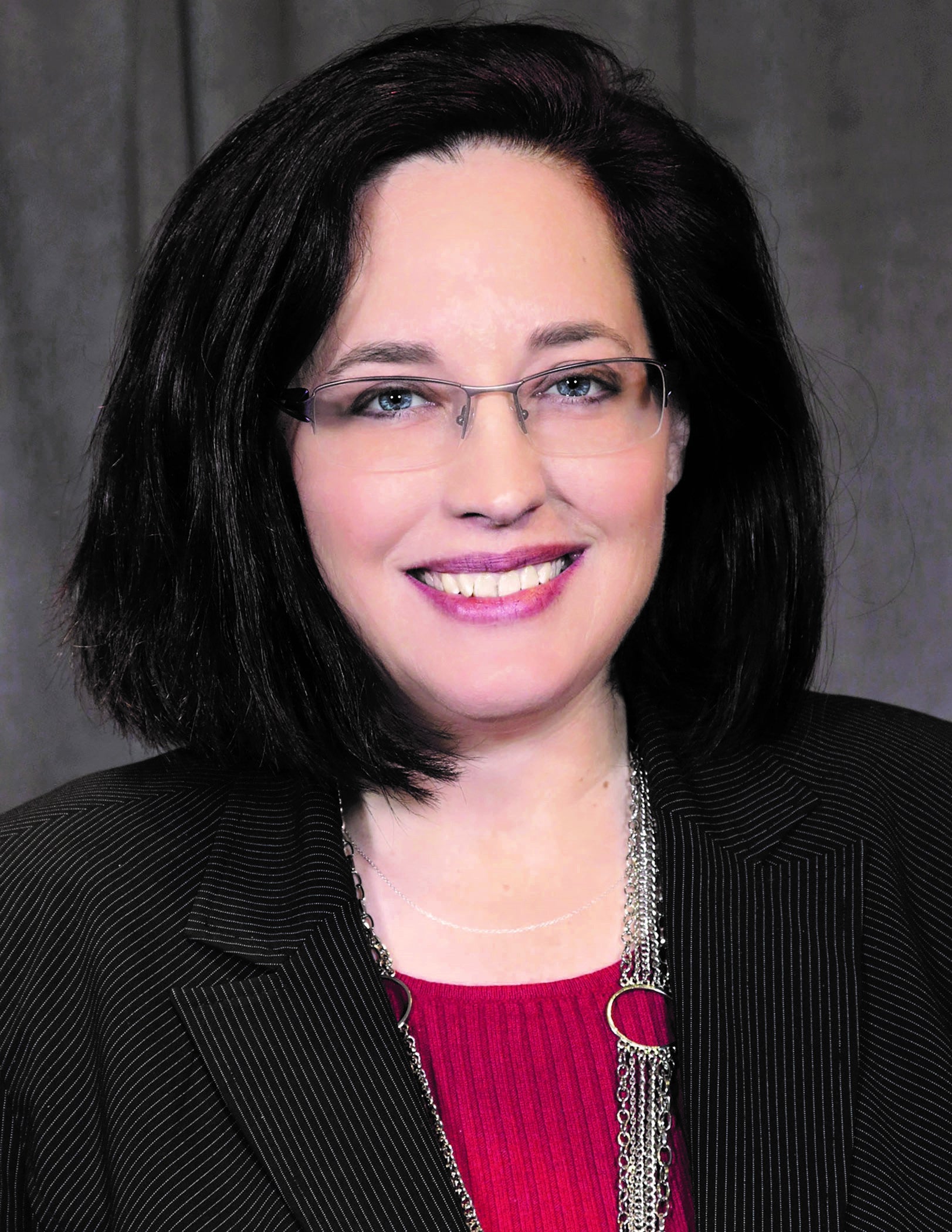Professional artists are a tremendous part of developing the metaverse, often hired to create the art or other content or perform. As the world’s largest labor union representing working media artists, the Screen Actors Guild - American Federation of Television and Radio Artists (SAG-AFTRA) is navigating what this means for the thousands of members it represents.
Among SAG-AFTRA’s members are more than 160,000 actors, announcers, broadcasters, journalists, dancers, DJs, news writers, news editors, program hosts, puppeteers, recording artists, singers, stunt performers, and voiceover artists.
ACC member Ellen Zavian interviewed SAG-AFTRA executives on how they are dealing with the metaverse and what they are predicting for the near future.

Danielle Van Lier, assistant general counsel, intellectual property (IP) and contracts, at SAG-AFTRA, is responsible for managing SAG-AFTRA’s corporate contracts and intellectual property, as well as other efforts aimed at protecting the rights of SAG-AFTRA and its members. She is an adjunct professor at Southwestern Law School and a sought-after speaker who has addressed global audiences on topics such as deepfakes, rights of publicity, copyright, and the entertainment guilds.
Van Lier earned her Juris Doctor from the Washington University School of Law in St. Louis. She has a Bachelor of Arts in Japanese Language, Literature, and Cultural Studies from the University of California, Santa Barbara. In 2019, she earned a Master of Laws, with merit, in innovation, technology, and the law through the University of Edinburgh. She is currently pursuing a Master in Business Administration through Oxford Brookes University.

Sue-Anne Morrow, senior director of strategic initiatives, SAG-AFTRA, is responsible for spearheading initiatives, addressing challenges, and engaging with opportunities that new technologies and platforms present for the union’s members.
Morrow brings over two decades of experience as a performer to her work and has a Bachelors from Concordia University (Montreal) and a Masters in Fine Arts from the University of San Diego.
Defining the metaverse
Ellen Zavian: What is your definition of the metaverse as it relates to your current members?
Sue-Anne Morrow: The concept of the metaverse seems to still be evolving, but the most typical definition we have seen refers to virtual [VR] and augmented reality [AR] platforms. Generally speaking, if one of our members is doing voice-over or performance-capture services that will fuel avatars on these platforms, it should be covered under our contracts.
Get a glossary of metaverse terms in the companion piece to this article:
Welcome to the Metaverse – And the Virtual Pitfalls that Await
Zavian: Do you see adding a new type of membership (e.g., avatars)?
Morrow: No, that won’t be necessary. Our members, potentially, are the people who provide the voices, faces, and performances behind the avatars, that allow the avatars to be created, not the avatars themselves. Providing the voice, image, or performance for an avatar is not really different from performance in any other media — it’s just a new evolution in the way that performance is delivered and experienced by a viewer.
Our members will be compensated for any performance that results in the development of an avatar, as well as for the exposure of that avatar in the metaverse, or anywhere else the avatar or AI [artificial intelligence] voice is available. To the extent an avatar is wholly virtual, or created by AI without any human involvement, and does not rely on one or more person’s voice, likeness, or movements for its existence, we would need to assess how it was made and how it evolves prior to determining union coverage.
Negotiating agreements
Zavian: Does SAG-AFTRA need to negotiate specific agreements with metaverse platforms?
Morrow: It remains to be seen who our negotiating partners will be as this space evolves. As a union, we generally negotiate with the parties who employ our members, so it is more likely that we will be negotiating with the content creators, rather than the platforms on which the content will be delivered. In most cases, this will be a studio, recording company, broadcaster, audio house, videogame company, an ad agency, or brand. But it could be the AI company, or even the platform. It will all depend on the individual situation.
"It remains to be seen who our negotiating partners will be as this space evolves."
- sue-anne morrow
Zavian: With virtual concerts already happening in video games, this will allow concerts with avatar dancers in the background. How will this affect your members?
Morrow: Well, if this concert involves the use of performances by actual performers, that work may be covered under our collective bargaining agreements. If the avatar background dancers are generated by actual professional dancers or if the singers' voices are provided by professional singers, there really isn’t any difference between this and any other video game voiceover or performance capture work.
Zavian: On contracts — how will SAG-AFTRA negotiate contract clauses to reflect metaverse rights? A key fight that will be fought in the contract arena is who owns metaverse rights under existing contracts that were drafted before the metaverse was even contemplated. How will you handle such contracts?
"The metaverse is just another form of exploitation ... . And as new technologies develop, our contracts continue to evolve and we craft new contracts to address them."
- danielle van lier
Van Lier: Most of our contracts have provisions governing reuse of sound and photography from one project in subsequent projects. The metaverse is just another form of exploitation as far as that is concerned. And as new technologies develop, our contracts continue to evolve and we craft new contracts to address them. The contracts in these emerging technology areas will govern our members’ work and will address the rights and compensation our members are entitled to when the results and proceeds of their work are exploited, regardless of platform.
AI creations and IP
Zavian: The metaverse could have virtual creations made by AI. If such creations are deemed to be AI creations and not human creations, they may not be allowed certain types of intellectual property protection. Are you thinking about how this might impact your membership?
Van Lier: This is an interesting question. I assume [it was] raised by the [US] Copyright Office’s recent rejection of works created by AI as not having human authorship. This would not affect our members working on the creation, as our work and our contracts are primarily governed by labor law. It may limit the AI creations [in their] ability to be exploited, and that would impact how we approach the collective bargaining protections dealing with reuse.
So, with an AI-generated avatar, for example, if one of our members provides their services to create the voice, it wouldn’t really matter whether the output has copyright protection, the voice recordings would be subject to the terms of our agreements that are applicable to the work. This could occur if the work is governed by one of our AI-specific agreements or even under one of our contracts covering traditional media, if the content is then reused in AI-generated content.
It is also important to note that some intellectual property rights will continue to exist, notwithstanding the Copyright Office’s position on AI authorship. Whether created by an AI or a human, a virtual work that misappropriates one of our members’ image, voice, or any other protected attribute would still trigger potential violations of their image and voice rights (i.e., their rights of publicity).
"... Note that some intellectual property rights will continue to exist ... . Whether created by an AI or a human, a virtual work that misappropriates one of our members’ image, voice, or any other protected attribute would still trigger potential violations of their image and voice rights ... ."
- danielle van lier
In some circumstances, it may also constitute a false endorsement or otherwise violate their rights under the Lanham [Trademark] Act. While these laws are not covered by our collective bargaining agreements, SAG-AFTRA works on them legislatively and will ensure our members are protected from exploitation in these new and emerging spaces.
Right of publicity
Zavian: On the right of publicity: Can a metaverse company use a celebrity’s persona in the metaverse without liability exposure?
Van Lier: The simple answer is no — contrary to what some tech futurists might try to insist, the metaverse is still governed by the same laws as any other platform. If a usage would violate someone’s right of publicity in the offline world, or even on the traditional internet, it more likely than not is going to violate their rights of publicity in the metaverse.
" ... Contrary to what some tech futurists might try to insist, the metaverse is still governed by the same laws as
- danielle van lier
any other platform."
There have already been cases in California and New York involving digital avatars — and New York law expressly protects digital avatars of celebrities in its post-mortem right of publicity law. While there are certain exceptions intended to protect First Amendment speech rights, it is important for companies to understand that these rights are still protected.
Learn more about the metaverse and law in the companion piece to this article:
Welcome to the Metaverse – And the Virtual Pitfalls that Await
Zavian: How will you police the rights of your membership within the metaverse?
Van Lier: The metaverse certainly adds another wrinkle to policing our members’ rights, but so did the internet and streaming video and, before that, video cassette and pay television. As the means of content creation and distribution change and evolve, so do our contracts and our methods of contract enforcement.
Disclaimer: The information in any resource in this website should not be construed as legal advice or as a legal opinion on specific facts, and should not be considered representing the views of its authors, its sponsors, and/or ACC. These resources are not intended as a definitive statement on the subject addressed. Rather, they are intended to serve as a tool providing practical guidance and references for the busy in-house practitioner and other readers.
Disclaimer: The information in any resource in this website should not be construed as legal advice or as a legal opinion on specific facts, and should not be considered representing the views of its authors, its sponsors, and/or ACC. These resources are not intended as a definitive statement on the subject addressed. Rather, they are intended to serve as a tool providing practical guidance and references for the busy in-house practitioner and other readers.




